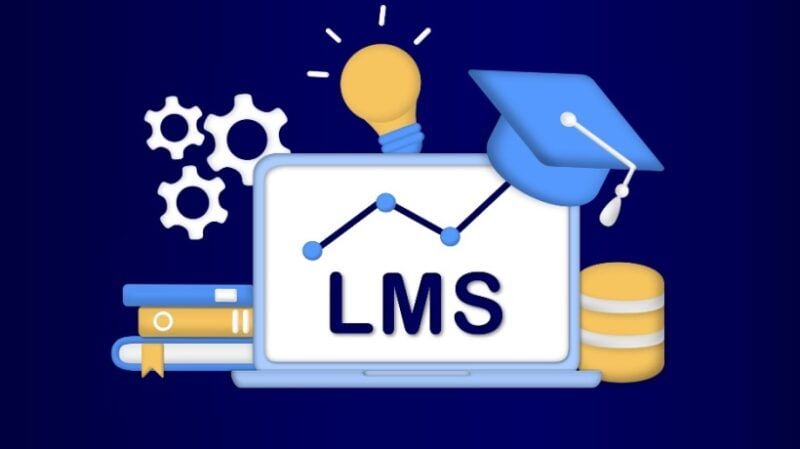

An LMS’s Components
A Learning Management System (LMS) is the foundation of contemporary corporate training and education initiatives. It allows organizations to efficiently deliver, track, and manage learning experiences. Whether you’re a teacher or a business leader, understanding the LMS features breakdown is crucial. By analyzing its core components, you can make a smart choice that aligns with your training and learning goals, ensuring measurable outcomes. In this article, we’ll dive deep into the key components of an LMS and why they’re essential for both educational institutions and corporate training programs.
Core Components Of An LMS
Understanding how to analyze an LMS effectively requires breaking it down into its primary components. Below are the critical building blocks that every LMS should have:
The Management Of Users
An LMS’s user management system is integral to organizing and managing users, from learners to administrators. It helps ensure a smooth User Experience by automating enrollment, managing group segmentation, and ensuring role-based access control. Tracking student development and establishing a safe, organized learning environment depends on this feature.
Management Of Courses
The course management system lies at the heart of any LMS. It enables the creation, organization, and delivery of training content, supporting a variety of formats such as video, SCORM-compliant modules, and interactive quizzes. An LMS equipped with content authoring tools can easily update courses, ensuring they remain engaging and relevant.
The Process Of Evaluation And Assessment
Tracking learner progress through assessments is crucial. LMS platforms provide a variety of tools for quizzes, tests, assignments, and certifications, all of which ensure that learning objectives are met. Moreover, incorporating gamification elements like badges and leaderboards can enhance motivation, making the learning experience more engaging and fun.
Data Analytics And Reporting
Insightful analytics are crucial for continuous improvement in any learning environment. Advanced reporting tools track learner progress, course completion rates, and engagement levels. By analyzing data, organizations can optimize training tools, improve resource allocation, and tailor learning paths for specific learner needs.
Tools For Teamwork And Communication
Effective learning is social, and an LMS facilitates communication through features like messaging, discussion boards, and peer-to-peer learning tools. These features allow learners to ask questions, share insights, and collaborate on group tasks. For businesses, these tools foster a collaborative learning culture, enhancing engagement and knowledge sharing.
Accessibility On The Go
An LMS must offer mobile access to accommodate today’s on-the-go learners. Learners can access training materials at any time and from any location due to adaptable design and offline accessibility. This flexibility increases user satisfaction, making learning more convenient and efficient.
Abilities For Integration
An LMS thrives when integrated with other business tools, such as CRM systems, HR software, and video conferencing tools. These integrations create a seamless User Experience and streamline corporate training programs by eliminating manual processes and improving efficiency.
Features For Security
Data security is paramount, especially when handling sensitive learner data. An LMS must have robust security measures, such as data encryption and compliance with regulations like GDPR. Features like single sign-on (SSO) and regular data backups ensure the system remains secure and reliable.
Personalization And Branding
Customization options allow organizations to tailor the LMS to reflect their unique needs and branding. Custom workflows, dashboards, and reporting options ensure the LMS aligns with operational goals, improving User Experience and engagement.
Why These Components Matter
Each of these LMS components plays a crucial role in building a comprehensive learning ecosystem. For example, user management tools help streamline administrative tasks, while course management features ensure that training content is delivered in an engaging and effective way. Assessment tools validate learning progress, and reporting features provide actionable insights that guide decision-making. When analyzing an LMS for corporate training analysis, it’s important to look for these features to ensure the system supports not only the organization’s immediate goals but also its long-term learning strategy.
Conclusion
The components of an LMS are the foundation of modern learning experiences. By understanding how each feature contributes to the overall learning environment, organizations can make informed decisions to enhance their training programs. Whether for corporate training programs or nonprofit organizations, the right LMS can improve efficiency, foster collaboration, and ensure measurable success in achieving learning objectives.
Are you trying to find an LMS with the ideal combination of features? For this, you need to learn more about how an LMS can improve your corporate learning environment and training materials.
Editor’s Note: Check out our directory to find, choose, and compare eLearning Industry’s Top LMS Software.